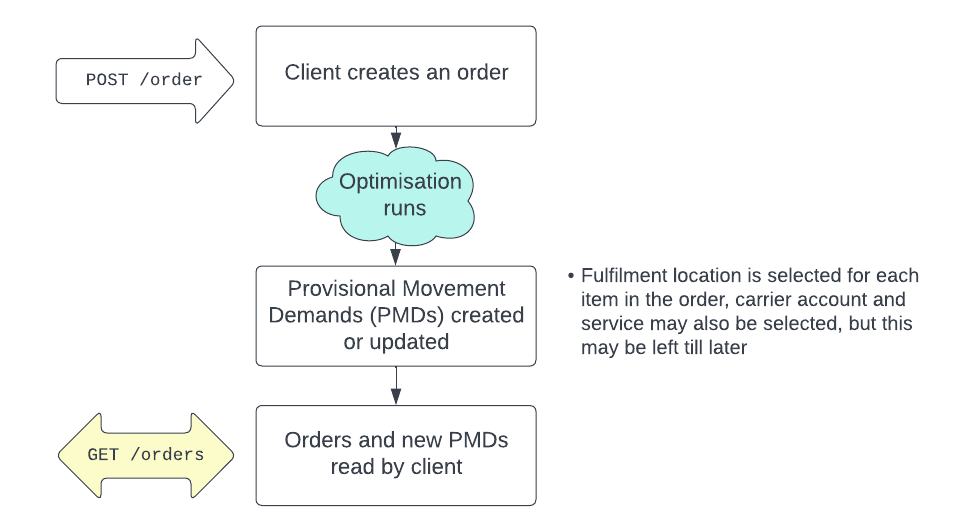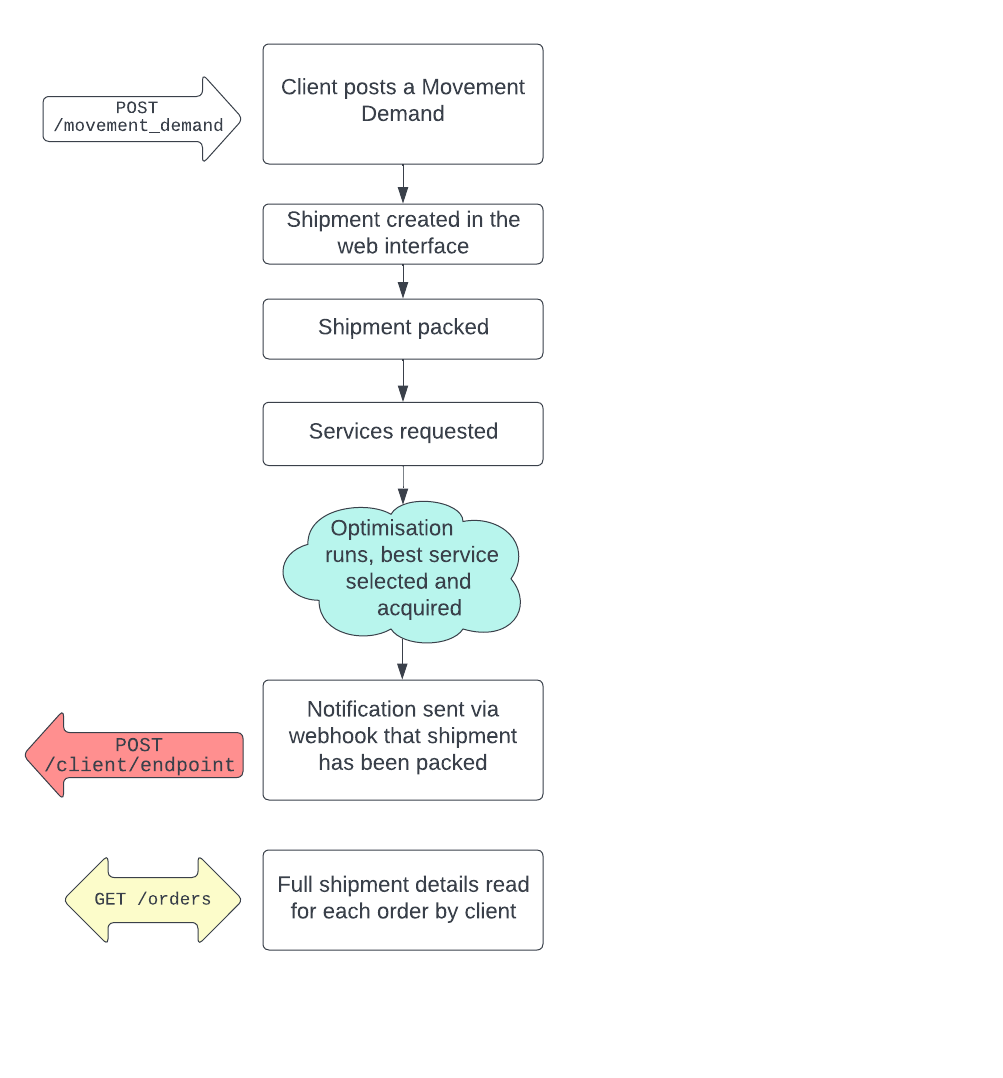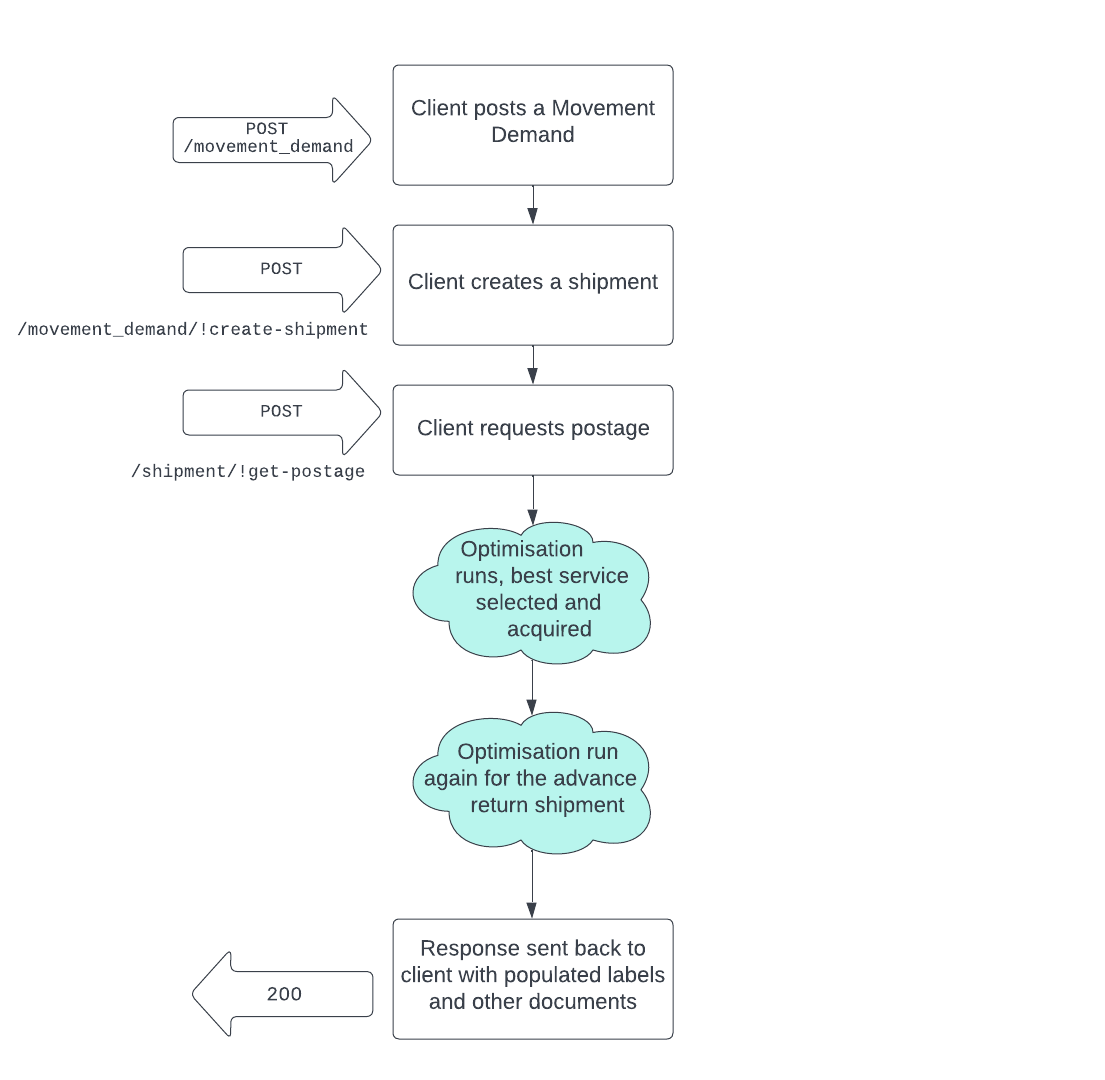This document gives a broad overview of how the 7bridges APIs interact with the optimisation points in the 7bridges platform.
Allocating orders
7bridges can allocate items in your orders to be shipped from the most optimal locations using the most optimal services. It communicates these allocations to your client on the API using the provisional_movement_demands field on each item on your order (see the Retrieve an Order section of the detailed API documentation for details), which your client can then act on.
Note that 7bridges's optimisation tools work on the granular level of items of an order, rather than an order as a whole, as this gives the best opportunities for savings. This can mean that 7bridges may recommend splitting an order and shipping some of its items from different locations.
The flow for this is shown in the following high-level diagram:

Selecting services
When you use the 7bridges platform to ship items of your order, the platform can pick the best service to use.
Scenario 1: configuration of the shipment in the 7bridges web interface
In this scenario, and operator uses the 7bridges web interface to configure the shipment's parcels and contents, and then the platform selects the best service automatically.

Scenario 2: shipment parameters defined elsewhere and passed to 7bridges
In this scenario the packages are specified elsewhere and 7bridges is used without the web interface to select the optimal service and return labels and other documents to the caller to print themselves.
Note that the optimisation will run twice if you are requesting an advance return shipment to determine the appropriate service for the return.

Further reading
Using tags to constrain optimisations – how to constrain optimisations so that you have more control over which services can be selected on an order-by-order basis.
Related Articles
- Understanding Addresses in the Order API
- Where can I find the 7bridges API docs?
- 7bridges APIs: High-level overview
- 7bridges APIs: Using tags to control 7bridges' optimisation